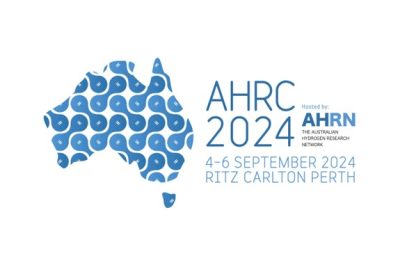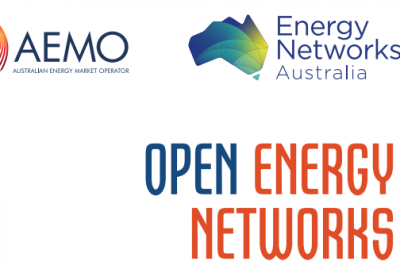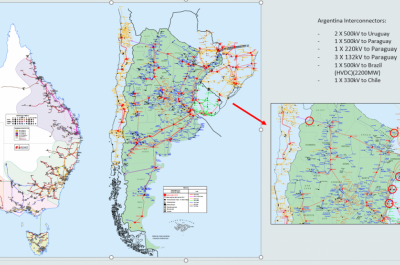Deep Dive: 2023 NSW Election Commitments
With the New South Wales state election less than two weeks away, the campaign is heating up. The Perrottet Government is seeking a fourth term in office with its self-described agenda to “Keep NSW Moving Forward.” In contrast, NSW Labor and its leader Chris Minns are promising a new direction and campaigning for a “Fresh Start for NSW”.
Slipping into minority government in the last term, (the Coalition holds 46 seats in the Legislative Assembly, with 47 required for majority government), and with a number of longstanding MPs and cabinet ministers retiring, winning majority government will be a tough but not impossible task for the Liberals and Nationals.
With 37 seats, Labor needs 10 seats to win majority government, 11 if it wants to name its own Speaker. Labor also finds itself with a leader in its most marginal seat of Kogarah – a margin of 0.1 per cent. Far removed from electricity generation country, Labor’s most fertile electoral ground can be found in outer Sydney seats with margins below 7 per cent like Winston Hills, Riverstone, and Parramatta.
Although not perceived as a decisive issue this election, energy policy has been part of each party’s pitch to voters and will shape Australia’s energy transition.
In this joint article, the Australian Energy Council (AEC) and Energy Networks Australia (ENA) take a look at the election commitments from both major parties and what it might mean for the energy sector.
ALP
Commitment: Create the NSW Energy Security Corporation
Detail: NSW Labor has pledged to create the NSW Energy Security Corporation, a state-owned body that it says will accelerate investment in renewable energy assets to deliver “cleaner and more reliable energy and help keep the lights on.”
The NSW Energy Security Corporation will be seeded with a $1 billion investment from the existing Restart NSW Fund. The role of the NSW Energy Security Corporation will be to partner with industry on projects that provide affordable, accessible and reliable energy to NSW including:
- Medium to long duration renewable storage solutions like pumped hydro, as well as any other commercially viable technologies able to provide grid stability;
- Community batteries to maximise the benefits for households of rooftop solar.
AEC Comment: Firmed renewables are essential to reach NSW Labor’s 2030 emissions targets. The AEC does not oppose government funding but notes governments should be mindful not to crowd out private investment, which is more efficient in the long-term.
Commitment: Establish a Hydrogen Centre of Excellence
Detail: Establish a Hydrogen Centre of Excellence by committing $25 million to a vocational training centre in Glenwood in partnership with the Plumbing Industry Climate Action Centre.
Labor’s announcement says the Centre will be able to deliver hundreds of apprentices and upskilled workers every year. They’ll be trained with specialist skills in fire protection, fire control, plumbing and hydrogen. The project is expected to be operational by 2026.
Comment: In principle, the AEC and ENA support governments being involved in up-skilling workers to support new industries. Upskilling workers domestically has become more important with larger markets such as the US draining skills from Australia. However, the AEC is not aware of a business case for this funding.
Commitment: Establish the $485m Energy Relief Fund
Detail: $485 million Energy Relief Fund designed to help lower power bills.
The fund has two categories; residential and small business.
Eligible NSW small businesses will receive $315 directly off their energy bill. When matched by funding from the Commonwealth Government’s rebate scheme, around 320,000 eligible NSW small businesses will see $630 directly debited off their electricity bill.
Eligible NSW households prices will receive $250 directly off their energy bill. When matched with $250 from the Commonwealth Government’s Energy Bill Relief Fund, around 1.6 million eligible households will get $500 off their electricity bills. Deductions will be applied directly to bills, for one year and will be provided as quarterly instalments.
Comment: Direct support is an effective way to deliver timely bill relief to consumers and small business, and the AEC welcomes this initiative. ENA also supports efforts to assist vulnerable customers.
Commitment: Community Batteries
Detail: A Minns Labor Government will deliver more stability and reliability in our state’s energy supply by building community batteries
ENA Comment: Community batteries allow homes within a neighbourhood to store excess power generated during the day from their rooftop solar panels. The stored power can be used later in the evening when demand on the electricity network is traditionally higher. It also means that families can use more of the power that they actually generate, particularly at night, lowering their overall energy bills. It will also take pressure off the grid during periods of peak demand.
Commitment: Essential Energy
Detail: ALP claims Essential Energy (and other state-owned entities) could be at risk of privatisation.
ENA Comment: The ALP is running a scare campaign that a reelected Liberal Government will privatise Essential Energy to pay for its budgetary woes and fund election commitments. The NSW government has responded by releasing AER data that shows electricity network charges are $251 lower today compared with 2015 (pre-privatisation) for the average household and $1,769 lower for the average small business.
Liberals and Nationals
Commitment: Establish a $1.5 billion Clean Energy Superpower Fund which will help fast track more rooftop solar, community batteries, big grid batteries and pumped hydro.
Detail: A re-elected Liberal and Nationals Government will fast track the transformation of the NSW electricity system by setting up a $1.5 billion Clean Energy Superpower Fund, comprised of the Transmission Acceleration Fund and new funding to support the delivery of renewable energy storage and grid security projects, such as pumped hydro and batteries.
$23 million will also be invested by a re-elected Liberal and Nationals Government to kickstart the expansion of the Electricity Infrastructure Roadmap to cover rooftop solar and small-scale batteries and to unblock local grid constraints to allow more people to produce and share energy locally.
The commitment includes infrastructure like community batteries that can also be accessed by customers who are unable to install their own solar and battery because they live in a rental property or apartment.
AEC Comment: In order to meet the government’s emissions reduction targets, significant amounts of firming technology need to be installed as the grid is calibrated for primarily renewables generation. This fund targets the transition to a net-zero emissions economy but like similar ALP announcements, should be mindful not to crowd out private capital and efficient competitive investments, which are better for consumers in the long-term.
ENA Comment: There’s no transition without transmission. Investment in significant transmission infrastructure is vital to ensure the most affordable transition to a secure, reliable renewables-based energy system. Transmission is the backbone that will allow a more efficient mix of generation and storage to connect and facilitate the transition to net zero
Detail: Green hydrogen producers across NSW are now able to access $1.5 billion in concessions to reduce costs for large scale investment, including up to a 90 per cent reduction in their electricity network charges if they connect to parts of the grid with spare network capacity.
The funding is designed to provide hard-to-abate sectors with a pathway to zero emissions.
In the same announcement, the Government awarded up to $64 million of funding for the first two green hydrogen hub projects in the Illawarra and Moree.
The funding will:
- Support the first green hydrogen produced in the Illawarra, with at least four refuelling stations set to be developed in and around the Illawarra which can power up to 40 trucks and buses in the region.
- Support the construction of a hydrogen hub project in Moree which will convert green hydrogen into green ammonia used to fertilise cotton and other farms across the region.
AEC Comment: New industries take time to establish. The AEC envisages a potential hydrogen industry in Australia post-2030 for export and large industry, although it is not clear Australia’s prime location for bulk production is NSW.
ENA Comment: Renewable gas like green hydrogen will have an essential role to play in a decarbonised energy system to provide an alternative to natural gas for industry, businesses and homes, provide whole-of-system support and diversity of energy supply and deliver a new, lucrative export industry. Government support to help lower the production cost, but also increase the demand, of green hydrogen is welcome and important to help achieve these objectives.
Commitment: $500 million Energy Bill Saver
A re-elected NSW Liberal and Nationals Government will slash energy bills by $250 and help households unlock up to $400 in further savings by switching to a better deal.
Under the commitment, households would receive $250 off their energy bills by simply comparing their current energy deal. They could also unlock up to $400 in further savings by switching energy plans to a lower deal.
Commitment: Embedded Networks
Detail: The NSW Liberal and Nationals Government announced its Embedded Network Action Plan to cut energy bills, which includes: Introducing a maximum, IPART determined price for gas and for hot and chilled water supplied through embedded networks. Initiating an IPART review into electricity prices in embedded networks, to recommend whether the maximum price within embedded networks should be set below the Commonwealth’s default market offer.
ENA Comment: Embedded networks are an important pathway for delivering hot and chilled water to customers. Reforms to embedded network pricing is important to protect customers that have limited choice in the supply of their energy needs.
Commitment: The Liberal Nationals will Roll Out 30,000 Electric Vehicle Chargers by 2026
Detail: The NSW Liberals and Nationals will fast track the rollout of its public and private EV charging plans by: Reforming strata laws to make it easier for people living in apartments to charge their EV; Installing EV chargers throughout NSW transport hubs including commuter carparks and train, bus and ferry stations; Streamlining planning laws to accelerate the construction of chargers in public places like on power poles and parking meters.
ENA Comment: Easily accessible EV chargers are a key component to the success of moving Australian drivers onto electric vehicles. It will be important that their roll out and operation allows their flexibility to support the evolving power system. Also, this type of planning should be applauded. The price, range and availability of EVs still remains a barrier to uptake.
Commitment: Illawarra Renewable Energy Zone
Detail: The NSW Liberal and Nationals Government has declared the fifth Renewable Energy Zone (REZ) in the Illawarra to ensure the region plays a central role in the State’s clean energy future. The move makes the Illawarra the final REZ to be declared of the five zones identified under the nation-leading NSW Electricity Infrastructure Roadmap.
ENA Comment: Declaration of a renewable energy zone enlivens a special REZ planning and investment framework that coordinates significant infrastructure including transmission lines, renewable generation, hydrogen hubs and battery storage. By unlocking these areas, the government is sending the right signals for investment and confidence in the transition.
Other Developments: Eraring Power Station
With reliability emerging as an issue following the release of the Australian Energy Market Operator’s updated Electricity Statement of Opportunity in February the future of the Eraring Power Station, which supplies around a quarter of NSW’s power needs, was raised with both the Government and Opposition. Energy Minister Matt Kean was reportedly pressed on whether extending the life of the power plant would be ruled out and responded: “Of course we’re not ruling things in or out.” Meanwhile the Australian Financial Review reported that NSW Labor leader Chris Minns said he would consider buying back the power station if Labor won the March 25 election.


